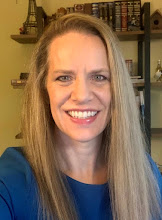As we progressed through the adoption process, a secondary, unforeseen priority emerged— the culture of our child’s birth country. When we were pursuing adoption with China, we discussed our limited knowledge and understanding of this culture and the need to educate ourselves and incorporate new customs and traditions into our family. But we had no idea where to start or how to make that goal a reality. We knew families where culture did not play much of a day-to-day role in their lives. But that was not an approach we could embrace. Culture brings such richness into the fabric of our lives. And we knew our child’s birthright was an integral part of who they were and what they were bringing into our family.
When we began learning about the similarities between Greek and Ethiopian ways of life, I could instantly envision incorporating this rich, new culture into our mosaic. It gave us comfort with our decision. I learned modern European scholars considered the name Ethiopia to be derived from the Greek words aitho “I burn” and ops “face”. Greece and Ethiopia share ancient roots as well as ties to Orthodox Christianity. A young Ethiopian woman once commented on my blog that she was welcomed into a Greek Orthodox church and community when she moved to a place with a limited Ethiopian footprint, and she remarked on all the parallels too. I found the symmetry of her experience fascinating.
When we first visited our daughter’s East African birth country, our understanding of the similarities multiplied. Much of the foliage in this nation, we had also seen in the Mediterranean one, which struck me when I tried to understand why I felt so at home in Addis and our daughter’s native Bahir Dar. Both countries share a focus on family and a fierce national loyalty to a land whose glory days had faded. I also noticed a certain joyful embrace of the more light-hearted aspects, whether it be the lack of punctuality or certain common foibles. A board member of Ethiopia Reads commented to my Greek husband, Michael, at a fundraising event, “You know ‘your people’ and ‘my people’ are very similar in neither are good at arriving somewhere at the appointed time.” Both peoples maintain a belief that the key to solving the toughest national problems involves working together.
As we each experienced our own individual reactions to the adoption process, each family member made the connections between our previous family cultures and this new one in their own unique way. Ethiopia reminds my husband of the Greece in his youth with its challenged infrastructure. My eldest son did not talk much about the impact his sister had on his own identify. He liked the idea of having a diverse family and definitely was interested if students or fellow athletes shared his sister’s heritage. But as I was cleaning up one day, I came across his school ID from the first year Leyla was home. He had taken an Ethiopian stamp and put it on the front of the card next to his picture. I definitely understood in that moment the expression, “A picture is worth a thousand words.”
My middle son, Damian, was more direct. He asked if he was Ethiopian now because of his sister. I reasoned, “You are because her culture is part of our family but you might have to explain to people if you tell them so.” He has embraced going to the local Ethiopian Community
 |
| Bahar Dar (Blue Nile Falls) Ethiopia 2014 |
 |
| Gondar Ethiopia 2014 |
I took an unorthodox step that demonstrated the extent of my evolution on taking on another culture. I have an extensive LinkedIn network and join groups of my focus areas or interest. I joined the Ethiopian Professionals Group. I introduced myself as the mother of an Ethiopian child who wanted to connect with her culture for her and for our family. I received the most amazingly warm welcome and truly felt I was a full member where I could both contribute and learn.
When I started this blog, the year after our daughter came home, my goal was to try to give back to this amazing land that gave us our daughter. I planned to raise awareness of both the need and the beauty and use it as a mechanism to learn more. The name I chose summed up those goals so well. I discovered a very different sojourn in the years since. The connections I forged are not just educational in nature or for my child; they have tied our whole family to a diverse group of people involved in some way with her culture whether as their birth country or from their own love of it.
As I heard from an actress on Twitter, “Ethiopia has a way of bringing people together.” So true, I found. I can now count an Ethiopian actress, artist and poet as important people in my life. I now call a writer who grew up in Ethiopia and tirelessly advocates for literacy progress there both a friend and an inspiration. When you bring a child that doesn’t share your biology into your heart, we call this “adopting a child.” For us, that process also meant “adopting a culture.” Our connection to Ethiopia continues to expand and grow, affirming our choice.
A version of this post previously published on InCulture Parent.











No comments:
Post a Comment